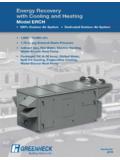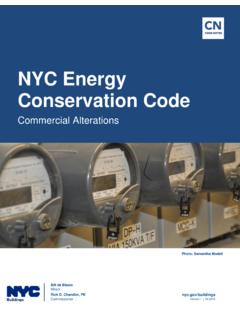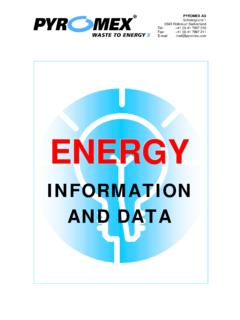Transcription of Max Series - Holmes Heating
1 TI-84R-NE0608 Residential Heat recovery (HRV) and energy recovery (ERV) VentilatorsManufactured withControlAir-15 ElectronicsOperation and Installation ManualNew Auto Dehumidistat Functionprevents unwanted use of thedehumidistat when outdoor temperaturesexceed 15 C (59 F).Max SeriesModels95 MAX155 MAX155 ECM155 MAXRX200 MAX200 MAXRXMAXTOP195 DCS300 DCS200 ERV200 ERVD2 Introduction .. Questions & Answers ..3 Climate Map ..4 Technical Data - Model 95 MAX ..5 Technical Data - Model 155 MAX ..6 Technical Data - Model 155 ECM ..7 Technical Data - Model 155 MAX RX.
2 8 Technical Data - Model 200 MAX ..9 Technical Data - Model 200 MAX RX ..10 Technical Data - Model MAXTOP ..11 Technical Data - Model Data - Model Data - Model 200 ERV ..14 Technical Data - Model 200 ERVD ..15 Function and Control ..16 Glossary of Terms ..16 Selecting Speeds and Modes of Control Pad Mounted in the Control Module ..18 Optional Remote Controls ..19 Using the Dehumidistat ..20 Schematic Diagram - Model 95 MAX ..21 Installation ..22 Installing Air Ducts ..23 Supply Air Air Exhaust and Grilles ..24 Installation Diagrams.
3 25-28 Air Flow Balancing ..29-32 Maintenance Routine For HRV ..33 Maintenance Routine For ERV ..34 Troubleshooting ..35 Interlocking HRV Operation to an Airhandler/Furnace Blower ..36 Wiring Diagrams ..37-38 Before installation, careful consideration must be given tohow this system will operate if connected to any other pieceof mechanical equipment, a forced air furnace or airhandler, operating at a higher static. After installation, thecompatibility of the two pieces of equipment must be con-firmed by measuring the airflow s of the Heat RecoveryVentilator (HRV) energy recovery Ventilator (ERV) byusing the balancing procedure found in this is always important to assess how the operation of anyHRV/ERV may interact with vented combustion equipment(ie.)
4 Gas Furnaces, Oil Furnaces, Wood Stoves, etc.).NEVER install a ventilator in a situation where its normaloperation, lack of operation or partial failure may result inthe backdrafting or improper functioning of vented combus-tion equipment!!!HRV - Aluminum CoreA Heat recovery Ventilator (HRV) is designed to providefresh air into a building while exhausting an equal amountof stale air. During the winter months, the incoming coldfresh air is warmed by utilizing the heat recovered from thestale air before it is exhausted to the outdoors. During sum-mer months when the indoor space is air conditioned, theHeat recovery Ventilator will help in cooling the incomingfresh air with the stale air that is being - Enthalpic Paper CoreAn energy recovery Ventilator (ERV) is designed to pro-vide fresh air into a building while exhausting an equalamount of stale air.
5 An ERV is designed for use in warmhumid areas with heavy air conditioning use. The ERV willtransfer both sensible and latent heat from the incomingfresh air to the outgoing stale air thereby reducing the load(due to ventilation) on the air conditioning are not suitable for climates where the temperaturedrops below -4 C (25 F).All Heat recovery Ventilators carry a Lifetime Warranty onthe heat recovery core and a 5 (five) year replacementparts energy recovery Ventilators carry a 5 (five) year war-ranty on the energy recovery core and a 5 (five) yearreplacement parts the warranty period, if any core experiences a failureor perforation caused by normal use while owned by theoriginal purchaser, a replacement core (FOB our plant) willbe supplied at no of ContentsIntroductionCautionWarrantyLEAVE FOR HOMEOWNERNOTE.
6 Due to ongoing research and product development, specifications, ratings and dimensions are subject to change without BE COMPLETED BY CONTRACTOR AFTER INSTALLATIONI nstalling Contractor _____Telephone / Contact _____Serial Number_____Installation Date _____Model _____IMPORTANT -PLEASE READ THIS MANUALBEFORE INSTALLING is the difference between an HRVand an ERV?The core in an HRV (Heat recovery Ventilator) trans-fers heat from one air stream to the other. This iscalled sensible heat. The term ERV ( energy RecoveryVentilator) is usually used to describe a unit with anenthalpic core that transfers moisture as well as heatfrom one air stream to the other.
7 This (moisturetransfer) is calledlatent - what does it mean?Enthalpy is the term used to describe the energycontent of air. This energy is a combination of the sen-sible and latent heat. Therefore, a core which transfersenergy is called an enthalpic an ERV better than an HRV?NOT NECESSARILY! In cold climates such as most ofNorth America, an HRV works better than an is because the air inside the home during the win-ter months will be more humid than the outside air. AnERV would transfer the latent heat (humidity) from theexhaust air back into the incoming airstream.
8 This willaggravate moisture problems in the home and encour-age the growth of mold and mildew. If the air in thehome is too dry for comfort, an ERV will not help. Ahumidifier should be used to increase the humidity to acomfortable do you use an ERV instead of an HRV?An ERV is recommended for warm, humid areas withheavy air conditioning use. As there is no defrost in anERV it is not recommended for areas where the tem-perature drops below -4 C (25 F).Why transfer moisture in the summer(cooling season)?The enthalpic core will allow moisture to be transferredfrom a humid air flow to a dry air flow.
9 This property isuseful in the cooling season if an air conditioning sys-tem is used to lower the indoor humidity. You will thenhave dry, cool air in the exhaust of the ERV, and warmhumid air in the supply stream. With these conditions,the ERV will be able to transfer the moisture and heatof the supply air to the exhaust air. In this way, theERV will supply to the home air which is cooler anddrier than outside. Remember that an ERV is not adehumidifier, and on its own will not take moisture outof the why use an ERV?A properly operating air conditioner will not only lowerthe temperature in your house, but will also lower thehumidity level.
10 This prevents an uncomfortable coldand damp situation. In fact, about 2/3 of the energyused by the air conditioner system is to remove mois-ture. Therefore, when ventilating in the summer, lessmoisture brought into the home means less work forthe air conditioner, and energy savings for the winter, an ERV recovers some humidityfrom the exhaust air, reducing the need for humidifica-tion, if the required ventilation rate would make thehome too 's the difference between this type of coreand a rotary type?Here's a list of characteristics of the fixed plate No rotating parts, so maintenance is easy and theunit lasts a long It is very flexible in terms of The core can easily be Because the supply and exhaust air streams arecompletely separate, there is very little cross leak-age of any dust or the core become clogged with dust?








